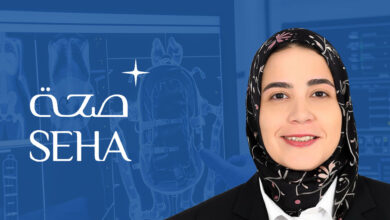Acute Pyelonephritis
By Dr. Yousef Matani, Consultant Urologist at Al-Ahli Hospital - Doha / Qatar

Acute pyelonephritis (APN) is an infection involving the kidney and renal pelvis. It represents a more severe form of infection than acute cystitis. The main features that define this syndrome include the triad of high fever, flank pain and tenderness. 80 % of cases may present with storage lower urinary tract symptoms such as burning, frequency and urgency. The causative uropathogen is isolated by urinalysis and culture and the most common bacteria isolated is E. coli and other gram-negative bacilli.
APN may be mild or severe resulting in sepsis and shock. The severity is dependent on host factors e.g. presence of comorbidities, immune status, presence of obstruction and elderly patients (> 65 years).
Epidemiology
APN is a common disease. The estimated global annual incidence is 10.5 to 25.9 million cases. It is common among females. Percentage of hospitalized patients is higher among children and elderly than among healthy young women. APN is a major cause of mortality. This is largely due to associated sepsis and septic shock. It is estimated that APN accounts for 10% of septicemia cases. The total estimated cost is very high, however, recent introduction of observation units and change in practice have resulted in significant drop in rates of admission.
Risk Factors
APN occurs in around 3% of cases of cystitis and asymptomatic bacteriuria. It also complicates cases of urinary tract obstruction e.g. pregnancy, stones. Others include genetic predisposition, high bacterial load and virulence and presence of comorbid conditions e.g. diabetes.
Natural History
APN occurs when enteric bacteria enter the bladder and ascend to the kidneys. Rarely, organisms such as Staphylococcus aureus or candida seed the kidneys hematogenously. With appropriate care, clinical manifestations usually decrease progressively. However, resolution may require up to 5 days. Worsening or no improvement by 24 to 48 hours arouses concern for potential complications that may warrant urgent intervention. These complications may include obstruction (e.g. stones), abscess formation, severe gas-forming infection (especially in diabetics), acute kidney injury (usually transient), advanced renal failure and recurrent pyelonephritis (rate of < 10%).
Diagnosis
Diagnosis of APN is dependent on clinical evaluation, urine culture and supportive imaging modalities. It depends largely on isolation of bacteria by urine culture.
Imaging is, initially, recommended in patients with sepsis or septic shock, known or suspected urolithiasis, or a new decrease in the glomerular filtration rate. Subsequent imaging is indicated in patients whose condition worsens or does not improve after 24 to 48 hours of therapy.
Differential diagnosis for flank pain or tenderness, with or without fever, include:
- Acute cholecystitis
- Appendicitis
- Urolithiasis
- Paraspinous muscle disorders
- Renal-vein thrombosis
- Pelvic inflammatory disease
Pathogens
Among young healthy women, E. coli account for more than 90%of pyelonephritis cases.
In contrast, among men, elderly women, and urologically compromised or institutionalized patients, other organisms are involved in addition to E.coli strains.
Emerging antimicrobial resistance is growing due to antibiotic abuse and bacterial virulence.
Management
The three pillars of pyelonephritis management are:
1. Supportive Care:
a. Fluid resuscitation
b. Medications to control symptoms, such as analgesics, antipyretics
2. Antimicrobial Therapy:
a. Must be started promptly without waiting for the urine culture result
b. Type and duration of empirical antibiotics, route of administration and necessity for admission are dictated by many factors including, but unlimited to, microbial resistance, severity of infection and host-related risk factors
c. Duration of antibiotic treatment ranges between 1 to 4 weeks.
d. Monitoring of effectiveness of therapy is essential. Clinical worsening or lack of any improvement after 1 to 2 days of antibiotic therapy mandates repeat urine culture and imaging to identify an underlying cause and/or abscess formation.
3. Source Control:
a. Indications for initial and subsequent imaging (i.e., baseline risk factors and clinical worsening or lack of improvement after 24 to 48 hours of therapy) to assess for obstruction, abscess, or necrotizing infection
b. Ultrasonography is more sensitive than computed tomography (CT) for the diagnosis of hydronephrosis, less expensive and available at the bedside
c. Unenhanced CT is the preferred initial method for management of acute flank pain or tenderness
d. Contrast enhanced CT is more sensitive for the diagnosis of abscesses, inflammation, and gas formation.
Special Populations
Pyelonephritis during pregnancy can progress rapidly, causing life-threatening complications in both the mother and the fetus. It requires hospitalization.
Febrile UTI in children is usually associated with underlying congenital anomalies.















